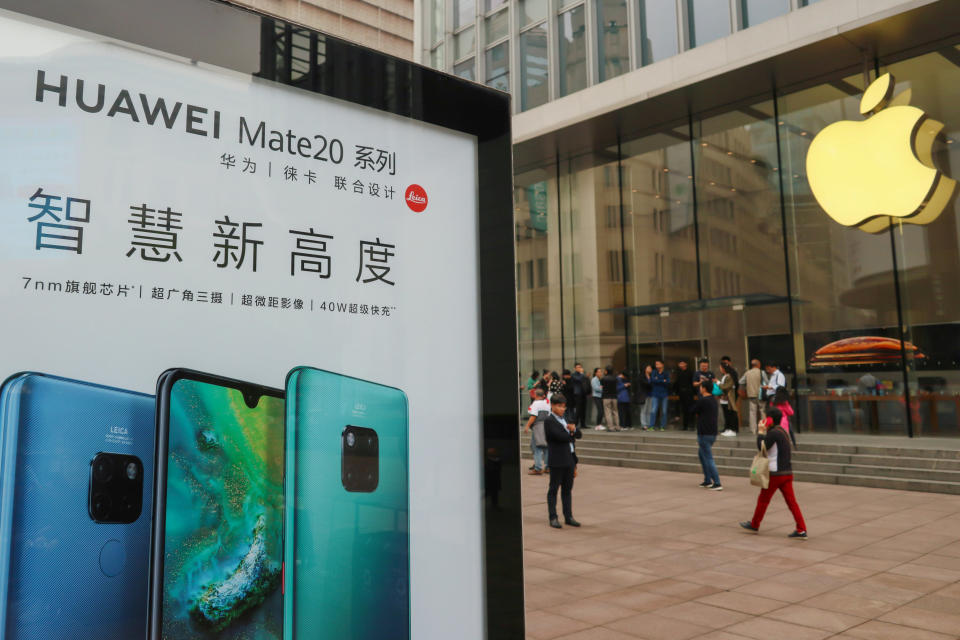Apple is trying to steal business from China’s homegrown smartphone players
Apple is having a rough quarter selling iPhones to Chinese consumers, according to CEO Tim Cook’s letter to investors on Wednesday. Cook blamed the macroeconomy and U.S.-China trade tensions, but said the company won’t “sit around waiting for the macro to change" in an interview with CNBC.
The iPhone maker has come up with what it hopes to be a solution to tepid sales in its second-largest market: get people to trade in their Android phones for credit to help them buy a newly-released iPhone.
To boost iPhone sales, Apple launched a “GiveBack” trade-in promotion offer for its new iPhone XS and iPhone XR devices in the U.S. in November. In late December, the promotional program for the new models went live in China, adding one major perk: users in China can not only trade in their old iPhones, but also Android phones made by Apple’s major competitors in China, including Huawei, OPPO and Xiaomi.
Consumers can trade in a Huawei’s flagship phone Mate 9 PRO with 128 GB storage, for example, for a 720 yuan ($104) credit that they can use on iPhone XS and XR purchases. But the trade-in value for Android Phones seems to be much lower than old iPhone devices. A functional iPhone 7 Plus with the same amount of storage can get a trade in value of 1939 yuan ($282).

A rare move for Apple
Offering trade-ins for Android phones is a rare move for Apple and suggests that the Silicon Valley giant is having a difficult time in China not just getting existing iOS users to upgrade to the latest model, but also luring users from homegrown Android phones. The offer comes after Apple iPhone sales in China lost momentum in November, with shipments tanking 22.8% month-over-month and iPhone’s market share dropping to 11.7%. Domestic giants Huawei, Oppo, Vivo, Xiaomi (which run on the Android operating system) account for 77% of the China market, according to IDC. Analysts see it as a result of slow sales volume of the new iPhone Xs and XRs since their launch in September.
It’s too early to say whether the trade-in program will help Apple attract new users. Even with the maximum trade-in credit, users still need to pay about $710 for the cheapest iPhone XS, which is sold for $1,265 in China. It’s also harder to lock in users within the iOS system in China, where proprietary Apple services, including iMessages and iTunes, aren’t as popular as in the U.S.
The promotion in China is available until January 31, around the same time the iPhone maker is expected to release its fiscal first-quarter earnings. Cook said the trade-in program is one of the initiatives to improve the company’s results in his letter, but he didn’t specify his expectations for the promotion in China.
“We started it primarily because it’s great for the environment,” Cook told CNBC. “There's a substantial benefit, economic and environmental from a trade-in.”
Krystal Hu covers technology and trade for Yahoo Finance. Follow her on Twitter.
Read more:
Chinese companies flooded into the U.S. IPO market in 2018
What Tim Cook left out about China in Apple's revenue guidance
Shares of these U.S. suppliers are getting slammed in the wake of the Huawei arrest
